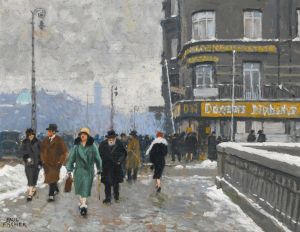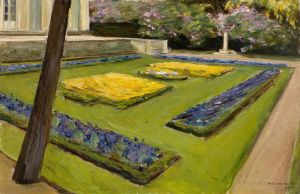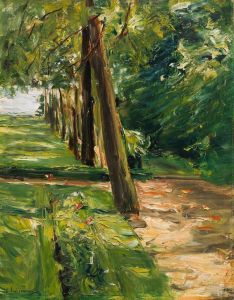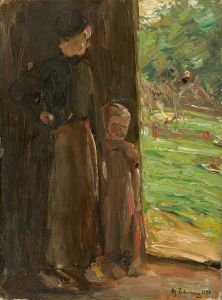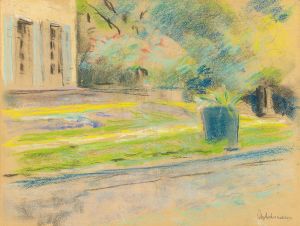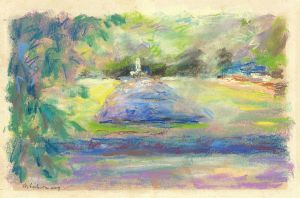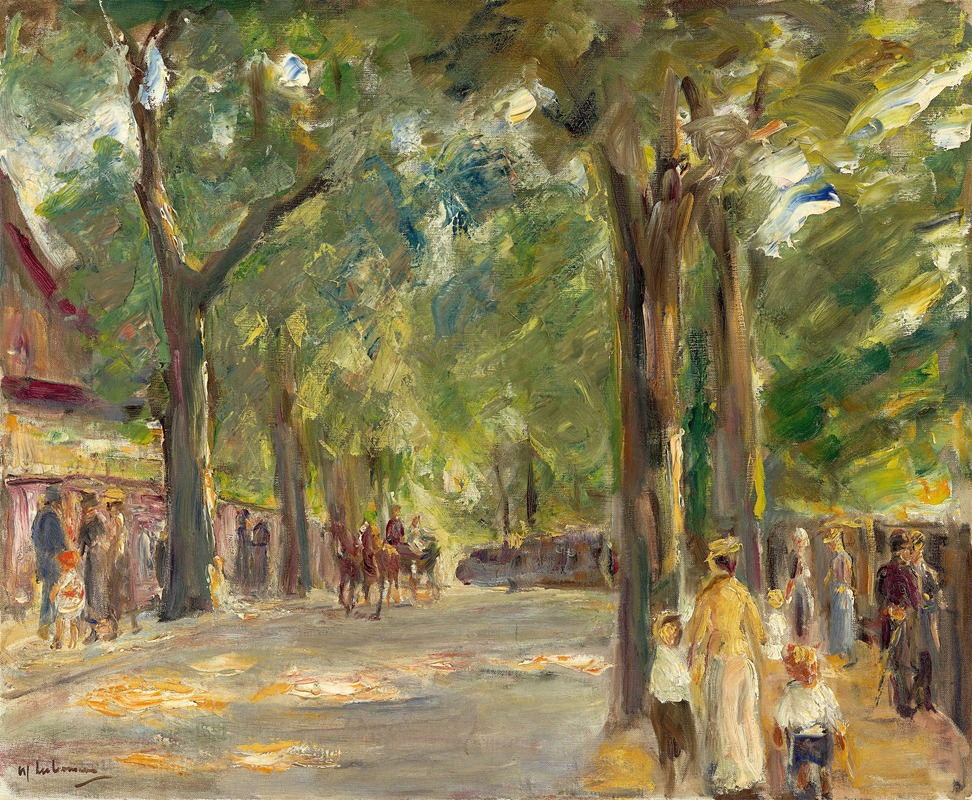
Die Große Seestrasse in Wannsee mit Spaziergängern
A hand-painted replica of Max Liebermann’s masterpiece Die Große Seestrasse in Wannsee mit Spaziergängern, meticulously crafted by professional artists to capture the true essence of the original. Each piece is created with museum-quality canvas and rare mineral pigments, carefully painted by experienced artists with delicate brushstrokes and rich, layered colors to perfectly recreate the texture of the original artwork. Unlike machine-printed reproductions, this hand-painted version brings the painting to life, infused with the artist’s emotions and skill in every stroke. Whether for personal collection or home decoration, it instantly elevates the artistic atmosphere of any space.
"Die Große Seestrasse in Wannsee mit Spaziergängern" (The Large Seestrasse in Wannsee with Strollers) is a painting by the German Impressionist artist Max Liebermann. Created in 1924, the work depicts a serene scene along the Große Seestraße, a prominent street in the Wannsee district of Berlin, Germany. This area was known for its picturesque landscapes and proximity to the Wannsee lake, making it a popular destination for leisure and recreation during the late 19th and early 20th centuries.
Max Liebermann (1847–1935) was one of the leading figures of German Impressionism and a central figure in Berlin's art scene. He was particularly known for his depictions of everyday life, often focusing on outdoor scenes, gardens, and urban landscapes. Liebermann's work frequently reflected his interest in light, movement, and the natural environment, which were hallmarks of the Impressionist style.
The painting captures a tranquil moment along the tree-lined Große Seestraße, with figures strolling leisurely along the path. The composition emphasizes the interplay of light and shadow, as sunlight filters through the trees, creating dappled patterns on the ground. The figures, rendered in loose, fluid brushstrokes, blend harmoniously into the surrounding environment, reflecting Liebermann's ability to convey a sense of atmosphere and movement.
Wannsee held personal significance for Liebermann, as he owned a summer house in the area, known as the Liebermann Villa. Located on the shores of Lake Wannsee, the villa and its gardens served as a source of inspiration for many of his works. Today, the Liebermann Villa has been converted into a museum dedicated to the artist's life and work, and it remains a key site for understanding his artistic legacy.
"Die Große Seestrasse in Wannsee mit Spaziergängern" exemplifies Liebermann's mature style, characterized by his mastery of Impressionist techniques and his focus on capturing the beauty of everyday moments. The painting is part of the broader body of work that Liebermann created during his time in Wannsee, which includes numerous depictions of the villa's gardens, the lake, and the surrounding landscapes.
The painting is currently housed in a private collection, and its exact provenance is not widely documented. However, it remains an important example of Liebermann's contribution to German Impressionism and his ability to depict the harmony between people and nature.








